I made a custom activity, based on this question Circular reveal transition for new activity , that handle the CircularRevealAnimation and his reverse effect when the activity finish:
public class RevealActivity extends AppCompatActivity {
private View revealView;
public static final String REVEAL_X="REVEAL_X";
public static final String REVEAL_Y="REVEAL_Y";
public void showRevealEffect(Bundle savedInstanceState, final View rootView) {
revealView=rootView;
if (savedInstanceState == null && Build.VERSION.SDK_INT >= Build.VERSION_CODES.LOLLIPOP) {
rootView.setVisibility(View.INVISIBLE);
ViewTreeObserver viewTreeObserver = rootView.getViewTreeObserver();
if(viewTreeObserver.isAlive()) {
viewTreeObserver.addOnGlobalLayoutListener(new ViewTreeObserver.OnGlobalLayoutListener() {
@Override
public void onGlobalLayout() {
circularRevealActivity(rootView);
if (Build.VERSION.SDK_INT < Build.VERSION_CODES.JELLY_BEAN) {
rootView.getViewTreeObserver().removeGlobalOnLayoutListener(this);
} else {
rootView.getViewTreeObserver().removeOnGlobalLayoutListener(this);
}
}
});
}
}
}
@TargetApi(Build.VERSION_CODES.LOLLIPOP)
private void circularRevealActivity(View rootView) {
int cx = getIntent().getIntExtra(REVEAL_X, 0);
int cy = getIntent().getIntExtra(REVEAL_Y, 0);
float finalRadius = Math.max(rootView.getWidth(), rootView.getHeight());
// create the animator for this view (the start radius is zero)
Animator circularReveal = ViewAnimationUtils.createCircularReveal(rootView, cx, cy, 0, finalRadius);
circularReveal.setDuration(400);
// make the view visible and start the animation
rootView.setVisibility(View.VISIBLE);
circularReveal.start();
}
@Override
public boolean onOptionsItemSelected(MenuItem item) {
switch (item.getItemId()) {
case android.R.id.home: onBackPressed();break;
return super.onOptionsItemSelected(item);
}
}
@Override
public void onBackPressed() {
destroyActivity(revealView);
}
private void destroyActivity(View rootView) {
if(Build.VERSION.SDK_INT>=Build.VERSION_CODES.LOLLIPOP)
destroyCircularRevealActivity(rootView);
else
finish();
}
@TargetApi(Build.VERSION_CODES.LOLLIPOP)
private void destroyCircularRevealActivity(final View rootView) {
int cx = getIntent().getIntExtra(REVEAL_X, 0);
int cy = getIntent().getIntExtra(REVEAL_Y, 0);
float finalRadius = Math.max(rootView.getWidth(), rootView.getHeight());
// create the animator for this view (the start radius is zero)
Animator circularReveal = ViewAnimationUtils.createCircularReveal(rootView, cx, cy, finalRadius, 0);
circularReveal.setDuration(400);
circularReveal.addListener(new Animator.AnimatorListener() {
@Override
public void onAnimationStart(Animator animator) {
}
@Override
public void onAnimationEnd(Animator animator) {
rootView.setVisibility(View.INVISIBLE);
finishAfterTransition();
}
@Override
public void onAnimationCancel(Animator animator) {
}
@Override
public void onAnimationRepeat(Animator animator) {
}
});
// make the view visible and start the animation
rootView.setVisibility(View.VISIBLE);
circularReveal.start();
}
}
You can extend this with your own activity and call in your onCreate the method 'showRevealEffect' like this:
@Override
protected void onCreate(@Nullable Bundle savedInstanceState) {
super.onCreate(savedInstanceState);
setContentView(R.layout.your_activity_layout);
//your code
View root= findViewById(R.id.your_root_id);
showRevealEffect(savedInstanceState, root);
}
You also have to use a transparent theme like this one:
<style name="Theme.Transparent" parent="Theme.AppCompat.Light.NoActionBar">
<item name="android:windowIsTranslucent">true</item>
<item name="android:windowBackground">@android:color/transparent</item>
<item name="colorPrimary">@color/colorPrimary</item>
<item name="colorPrimaryDark">@color/colorPrimaryDark</item>
<item name="colorAccent">@color/colorAccent</item>
<item name="colorControlNormal">@android:color/white</item>
</style>
In the end, to launch this activity you should pass via extra the coordinates where the animation should start:
int[] location = new int[2];
fab.getLocationOnScreen(location);
Intent intent = new Intent(this, YourRevealActivity.class);
intent.putExtra(SearchActivity.REVEAL_X, location[0]);
intent.putExtra(SearchActivity.REVEAL_Y, location[1]);
startActivity(intent);




